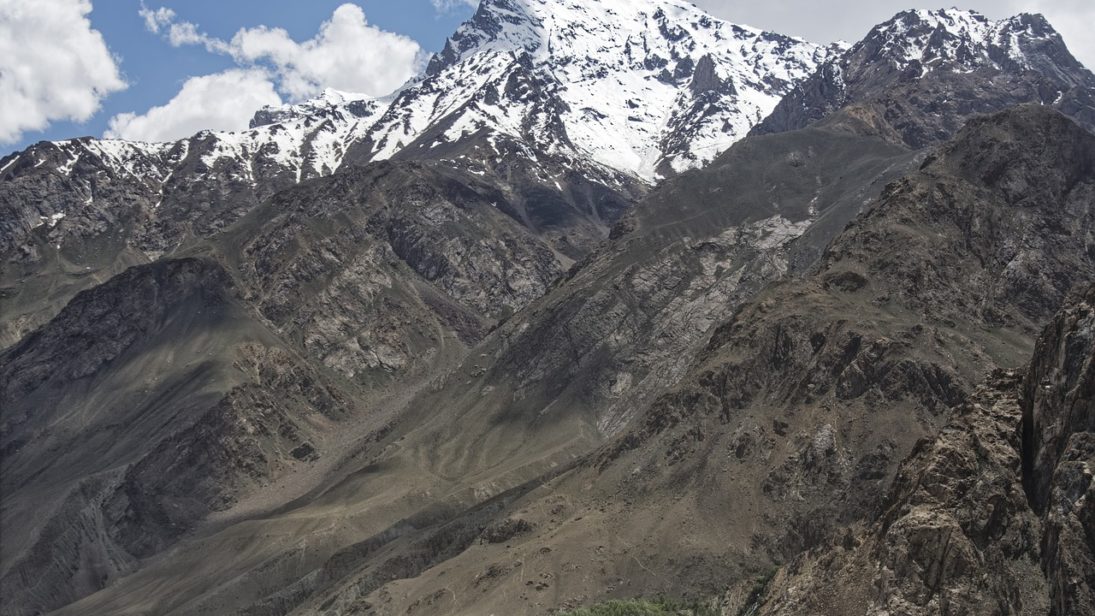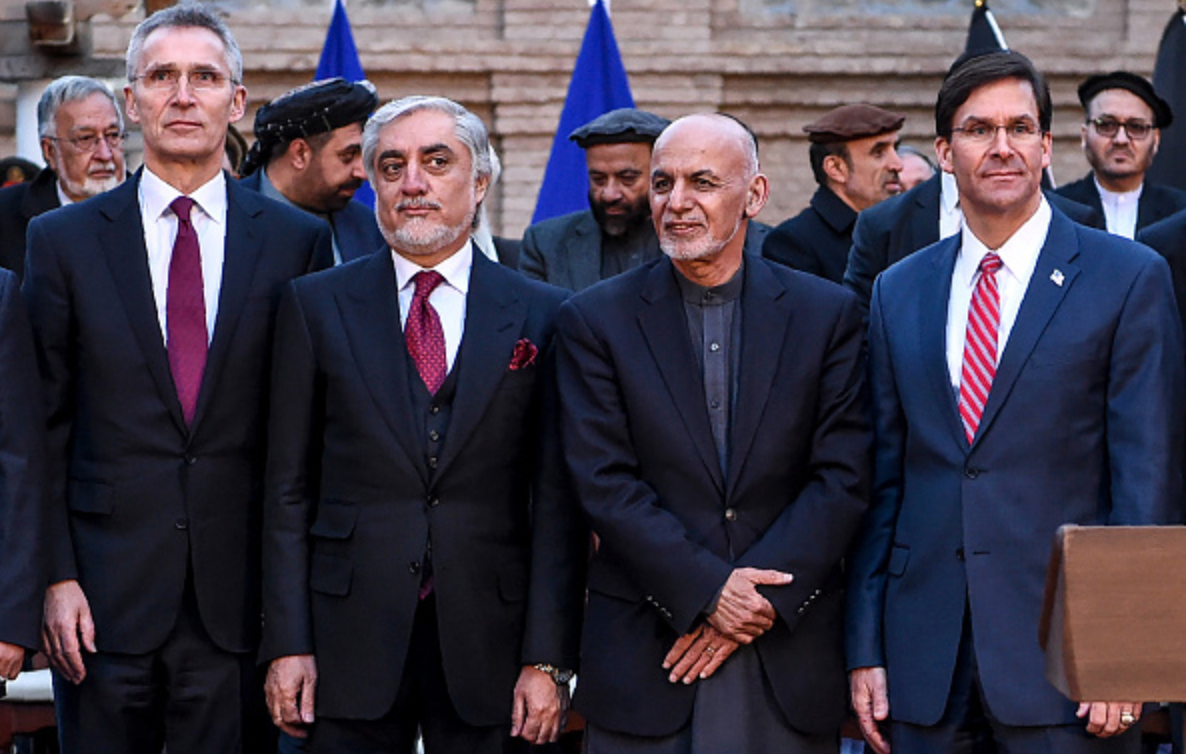
The year 2020 presented a mix of hope and challenge for the Afghan people and the world. The peace agreement signed between the Taliban and the United States on February 29 was an inflection point after nineteen years of war; it seemed to be a step towards resolving the Afghan conflict at the negotiating table, rather than on the battlefield. The historic inauguration of intra-Afghan peace talks in Doha on September 12 represented the most significant development in 2020, an unprecedented event for the many warring factions within Afghanistan. However, aspirations for the intra-Afghan talks ultimately proved beyond immediate reach: carried out at a slow pace, the talks only resulted in an agreement on rules and procedures after three months. As Afghanistan enters 2021, the peace process is likely to define its agenda. Political divisions in Afghanistan, a divided Afghan government that may be ill-equipped to lead the peace talks, a lack of clarity regarding the Biden administration’s stance towards Afghan peace talks and U.S. troop withdrawal, the Taliban’s inflexible negotiating position, and an increase in violence all point to a challenging and politically uncertain year ahead for Afghanistan.
A Divided Republic Pact and the Emboldened Taliban
As Afghanistan enters 2021, the peace process is likely to define its agenda. Political divisions, a divided Afghan government, U.S. troop withdrawal, the Taliban’s inflexible negotiating position and an increase in violence all point to a challenging and politically uncertain year ahead.
The 2019 contested presidential election cast its shadow over the intra-Afghan peace talks at the beginning of 2020, the result delayed until February. The election result announcement put Afghanistan’s shaky stability at risk and the country on the brink of a critical crisis as Abdullah Abdullah, the main rival, rejected the result, claiming the election was rigged and announcing his own inauguration on the same day of Ashraf Ghani’s. The two political leaders took the presidential oath of office some hundred meters away from each other. Subsequently, a weak government based on a power-sharing agreement formed—putting the republic pact in a vulnerable position including in the peace talks, in guaranteeing security, or in delivering basic services to the Afghan people. The gradual deterioration of security—including the most recent rocket shelling on Kabul, the increasingly targeted killings and violence across Afghanistan, the alarmingly economic decline, and the lack of financial accountability in the government—has frustrated the Afghan people. This has all lead the government to lose the trust of its base, even among those standing against the Taliban.
The Afghan government has mired itself in conflicts over power sharing and even small bureaucratic issues which have crippled the government’s negotiating position with the Taliban. Ashraf Ghani, who is attempting to monopolize the peace talks—likely as a means of asserting his government’s continuity—has worked to engineer the High Council for National Reconciliation (HCNR) membership in his favor in order to have the final say regarding any peace agreement, which violates his power sharing deal with Abdullah Abdullah. The HCNR, meant to lead the peace process, only formed months after the intra-Afghan peace talks inauguration and following the international community’s pressure. The international community expected Abdullah to play a dominant role within the HCNR, without which there would be a leadership vacuum at the peace talks. Critics have accused Ghani of holding the peace talks hostage to bargain for remaining in power. All the while, other major parties and influential figures have opposed the current makeup of the peace process and have refused to join the HCNR, which held its first leadership meeting on November 5. They even threatened that they would form a parallel Council for Reconciliation to directly negotiate with the Taliban, indicating a lack of consensus in the anti-Taliban pact.

Failure or Survival of Afghanistan: International Community’s Intervention Legacy
Supporting and preserving a stable and democratic regime—in which human rights, women’s participation, freedom of speech and minorities are protected—is a litmus test for the international community’s intervention in Afghanistan post-2001 and came to bear on events in 2020. The Geneva Conference in which international partners pledged significant amounts of aid concluded with a strong message from the international community to Afghanistan: “We stand with you.” Though this was a promising development that many hoped would sustain Afghan development, the withdrawal of all the U.S. forces by 2021 and international community’s apparent appeasing of the Taliban would likely put Afghanistan on the brink of a total collapse.
The February peace agreement between the Taliban and the United States paved the way for the intra-Afghan peace talks and generated hope for a political settlement, but also compromised the past nineteen years’ effort to build Afghan government capacity. The four key elements in the agreement remain unfulfilled at the end of 2020; this includes reducing violence, the Taliban cutting ties with al-Qaeda, and all parties to the conflict announcing a ceasefire. The government criticized the agreement—to which it was not privy—obliging that it release five thousand Taliban prisoners. Observers interpreted the agreement as granting the Taliban official recognition in a manner that would allow it to negotiate from a position of relative power.
Peace Talks in Doha, Qatar
Though the intra-Afghan peace talks in Doha represent a historic and promising development, persisting sectarian tensions mean they are unlikely bring a clean end to the conflict. Addressing years of grievances and fundamental ideological divisions to draft a practical “political formula”— agreeing on either a transitional mechanism or Taliban’s integration to the current political makeup—have slowed the peace talks’ pace.
Optimism surrounding the Doha talks soon faded as disagreements over the principles and procedures lagged for over two months while progress—both at the table and in reducing violence on the ground—stymied. Recognizing the U.S.-Taliban agreement as the starting point for the negotiations, and the “Hanafi” school of jurisprudence, which is one of the four major Sunni schools followed by the majority of Afghanistan’s Sunni Muslims, for resolving disputes—have become two major issues and processes slowing down the process. On December 2, the negotiating teams announced a breakthrough agreement on guiding principles moving the talks to the next phase which will be the substantive negotiations.
In 2021, the negotiating teams, tasked with drafting political roadmaps and a comprehensive ceasefire, will begin the substantive portion of the process. They could face stalemates at different stages unless an independent mediator, or the United States, pushes along the pace of the proceedings. The next phase of the negotiation would be the most difficult one as both sides have shown little evidence that they are willing to compromise their positions. The Taliban would be less likely to accept a power-sharing agreement with the current government, and Ghani is likely not to accept any political arrangement in which he is forced to relinquish much of his power. As the Taliban would be counting down for US troop withdrawal, Ashraf Ghani persistently tried to delay the talks partially driven by the hope that a Biden administration would lead to a shift in U.S. policy towards the Taliban and its troop withdrawal.
The negotiating agenda, which both sides have yet to officially announce, will include a proposed composition of an Afghan state, historical conflict over power among different ethnic groups and ideological divisions. The reintegration of the Taliban militants, transitional justice and a national reconciliation process would also be on the agenda. Each of these issues could lead to a deadlock or take months to settle.
A road to peace, or more of the same?
A negotiated settlement to end the conflict in Afghanistan will not materialize overnight. The peace process has a storied history of ebbs and flows over the past twenty years. The United States, the Afghan government and other international stakeholders have steadily come to the negotiation table as a means of ending the conflict. This time, however, the United States and the international community look determined to guarantee some negotiated settlement. The United States’ priorities have shifted such that Afghanistan is no longer near the top of its list. A Biden administration is unlikely to deviate from the ongoing troop withdrawal, only to amend its implementation.
Although a divided Afghan government and a lack of consensus among the non-Taliban pact further complicate prospects for peace, the United States is likely to push for an agreement before its complete withdrawal.
Although a divided Afghan government and a lack of consensus among the non-Taliban pact further complicate prospects for peace, the United States is likely to push for an agreement before its complete withdrawal. The United States holds leverage over both the Taliban and the Afghan government to keep them at the table until they reach an agreement. This may auger poorly for Afghanistan post-withdrawal in terms of lingering dependence on the United States. Afghan National Defense and Security Forces (ANDSF) proved to be incapable of defending major cities and districts without American air support. The Taliban are also vulnerable against the U.S. air support and would not be able to sell their victory as long as the U.S. troops are present on the ground.
Any sort of peace agreement with the Taliban would be the best-case scenario in 2021, although it would not mean “peace” in Afghanistan. It is essential for the government to maintain regional consensus, manage likely Taliban splinter groups and, most importantly, address another threat present in the corner, Islamic State in Khorasan (ISKP). ISKP is a threat consistently downplayed by the Afghan government—apparently for political reasons, and observers and experts, yet has steadily expanded its reach and presence in several provinces and in big cities. Although U.S. troops are prepared to leave the country, Afghanistan’s ongoing process of nation-building has far from concluded.
Editor’s Note: SAV contributors from across the subcontinent recap the most significant political, economic, and strategic developments in South Asia in 2020 and analyze what opportunities and challenges lie ahead for each country in 2021. Read the full series here.
***
Click here to read this article in Urdu.
Image 1: Pixabay
Image 2: Wasil Kohsar/AFP via Getty Images


